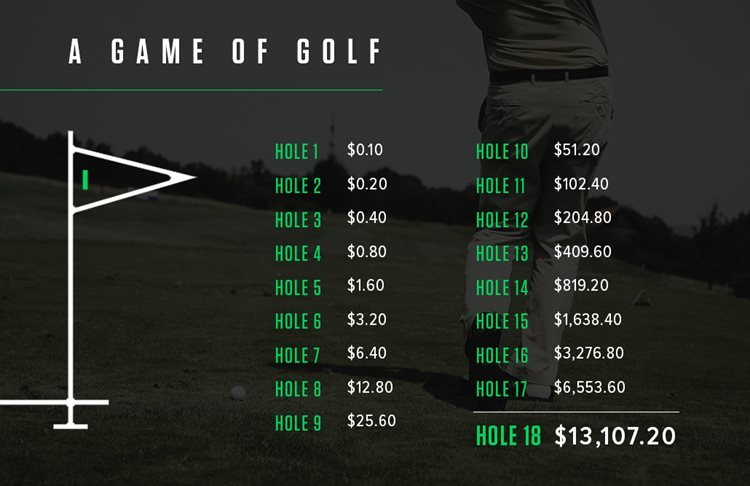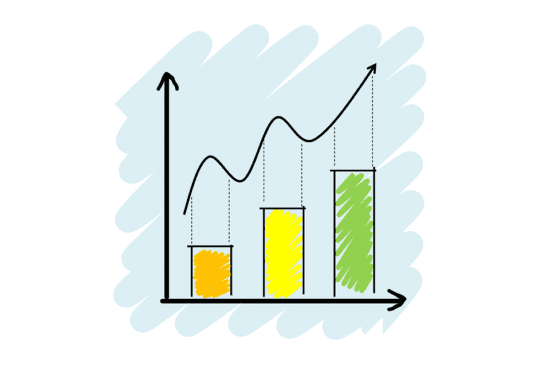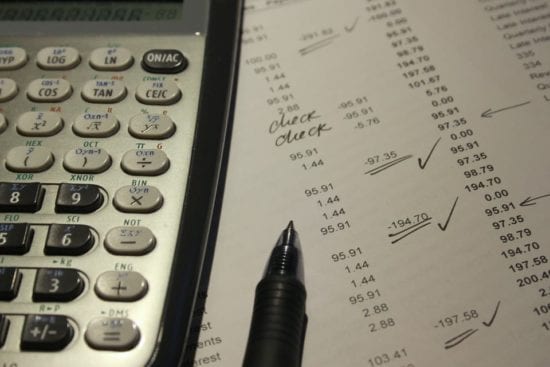How does compound interest work?
What you will get from this article:
- Understand the compound interest definition
- Discover what can happen with $1 when compound interest is maximized
- Learn how you can put compound interest to work for you – starting now
- Find out how to access the ultimate financial resource, Unshakeable by Tony Robbins

What is compound interest, and why bother with it? Even though it might appear that investing $1 right now is silly, even that small compound interest investment is powerful and suddenly that $1 is worth a whole lot more.
It might seem easier to make a larger, riskier decision right off the bat, but in truth, compound interest is perhaps the most powerful tool in your investment arsenal. Albert Einstein once called it the most important invention in all of human history. So why do so few of us take advantage? Most people simply don’t take the time to fully understand the concept.
But you’re not one of those people. You want to fully understand the definition of compound interest and how it works so that you can mindfully save. Here’s how a compound interest investment puts time on your side and leads to you to financial freedom, one dollar at a time.
Compound interest definition
What is compound interest? Let’s start with a dictionary compound interest definition to establish a core meaning of the term:
Compound Interest: A method used to calculate interest paid on both the principal and on accrued interest.
In other words, compound interest is interest on interest. It occurs when you reinvest interest rather than take it as a payout. This means that interest in the next period is earned not only on the principal sum, but also on any interest that was previously accumulated. The amount you earn is based on how much money you have invested, the percentage of interest that is paid on that amount and on the compounding frequency or number of times per year interest is paid out. Compounding frequency could be yearly, half-yearly, quarterly, monthly, weekly, daily or continuously. The more frequently interest is compounded, the more interest you will earn.
Let’s take an example with numbers to more fully understand the definition of compound interest. If you had $100 and an annual compound interest rate of 3%, at the end of year one you’ll have $103. For year two, you earn interest on all $103, meaning you’ll earn $3.09 in interest that year instead of an even $3.00. For year three you’ll earn interest on $106.09, and so on. After 20 years you’d have $100 * (1+.03)20, so $180.61 total.
Even small amounts of money make a difference. Just see what can happen to $0.10 if you doubled it 19 times:
As you can see in the video, with each round you play, the number gets remarkably bigger:
Tony’s golf analogy shows that compound interest can make a huge difference in your investments, whether in savings, bonds or stocks.

Simple interest vs. compound interest
Simple interest is interest that is only earned on the principal. For example, if you had $100 and a simple interest rate of 3%, you’d earn $3 each year. Your interest earnings would never change because the principal stays the same – so you’d earn $3 in year one, $3 in year two, etc. After 20 years you’d have $100 + ($3*20), so $160 total.
Per our example above, compound interest gives $20 more than simple interest over the same time period. And while that may not seem like much, it can really add up over time.
Another essential piece of the puzzle is to know the difference between APR and APY. APR stands for annual percentage rate and is an annual rate of interest that doesn’t take compounding into account. APY stands for annual percentage yield. This is a percentage rate that reflects the total amount of interest paid on the account. It’s based on the interest rate compounded daily for a 365-day period. You’ll see this rate mentioned on some types of compound interest investments.
The compound interest formula
To really go in-depth about the compound interest definition, let’s take a look at the formula. It may look complicated at first, but it’s actually relatively simple. The formula is A = P (1 + r/n) (nt). To calculate, enter the principal amount (money you’ve initially invested) into the P section, interest rate with r as the decimal, n as the number of times the interest is compounded and (nt) as the time the money is invested for.
For example, if you invested $5,000 into an account with an annual interest rate of 5% that is compounded monthly, it would look like this: A = 5000 (1 + 0.05/12) (12 (10)), which equals 8235.05. This means that your financial investment of $5,000 is now worth over $8,000 in 10 years’ time.
What is compound interest? Examples with numbers
Do you want to use the power of compound interest to become financially unshakeable? Here are some compound interest examples that better illustrate the answer to the question, “What does compound interest mean?”
1. You make an initial investment of $10,000 for a period of five years and that investment earns the return of 3%, which is compounded monthly. At the end of the five-year term, your initial $10,000 investment has grown to $11,616.17.


2. You make an initial investment of $10,000 for a period of two years and that investment earns a return of 2%, which is compounded quarterly. At the end of the short 2-year term, your initial investment has grown to $10,404.07
3. You make an initial investment of $1,000 for a year and that investment earns a return of 5%, which is compounded twice a year. At the end of the year, your $1,000 investment has grown to $1,050.63.

Another compelling example comes from financial expert Burton Malkiel, who created the idea of index funds. His story of two brothers investing is another great example of how to make a money machine.
Take two brothers, we’ll call them William and James. Both are 65 years old. Based on the information below, which brother has more money in his account at the age of retirement when they compare their returns? William, who invested for 20 years, or James, who invested for 25? Click below to find out.
Yes, William earned a whopping 600% more than his brother even though he invested the exact same amount for less time. This illustration makes it clear to see why compound interest is part of the language of the wealthy. Even if you’re no longer in your 20s, you can still take advantage of compound interest by putting away what you can now. Every day you wait, you’re losing out on extra income.
How to make compound interest work for you
Clearly, it pays to invest as early as possible to maximize your earnings. So why not start now? Perhaps you want to take that big bonus or raise and take a vacation or buy a new car. Or maybe the reason you’re not saving now is you’re already squeezing the most out of every paycheck.
It’s time to throw out the excuses, because you can invest just $1 or $10 a week to make compound interest work for you.
What would happen if you started with $1 and contributed $1 every week to a savings account with an APY of 0.25%? In 10 years, you’ll have $527. In 20 years, you’ll have $1,067.
If you started with $1 and contributed $10 every week to a savings account with an APY of 0.25%, how much would you have in 10 years? A few hundred maybe?
You’d actually have $5,266.60. In 20 years, it would be $10,665.
The very definition of compound interest is that the more you continue to add to your savings, the more money you have to earn interest. Basically, the more you put into your investment, the faster it grows. This is hands-down the best way to achieve one of Tony’s financial resolutions of speeding up savings.
Compound interest is found in many types of investments. Unfortunately, U.S. savings accounts now generally have extremely low APYs; most of them have been below 1% since the Great Recession. However, as our example shows, even a few tenths of a percentage point plus regular savings contributions can make a huge difference due to how compound interest works.
The best way to put compound interest to work for you is through other investment types, like a Roth IRA, SEP IRA, 401(k) or even a Coverdell ESA, an education savings account that can help you pay for your children’s education. With these compound interest investments, there is no threat of loss and a guaranteed rate of return.
Curious to learn more about smart investing and gaining your financial freedom? Check out how to plan your financial future and smart ways to plan for retirement. Harness the power of compound interest and see just where $1 can take you.
Want to discover more investing secrets from the smartest minds in finance today?
Get all the details in Tony Robbins’ Unshakeable audio. Unlock secrets on how to compound wealth, make smart investing decisions and master your personal finances today.